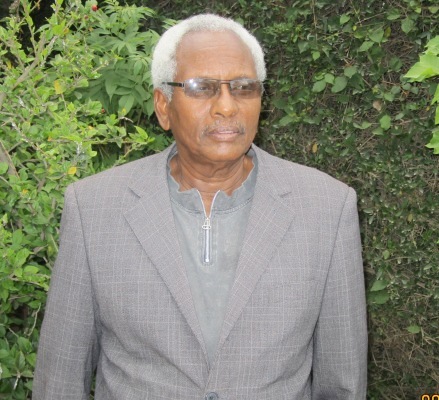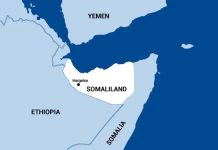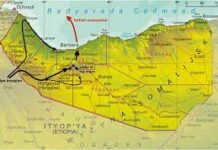 The most common definition of diplomacy highlights the following concepts;
The most common definition of diplomacy highlights the following concepts;
1) ”Diplomacy is the art and practice of conducting negotiation between nations 2) ”…The skill in handling affairs without arousing hostilities’. These internationally recognized concepts about diplomacy agree the fact that life is in a ceaseless development from simple to complex in the global process of transition to higher levels of scientific understanding of the world. In this world different nation-states live together with different national interests and agendas, and with diverse foreign policies. Divergence and convergence in the nation’s systems and interests represent everlasting changing realities in the human societies. These changes often instigate conflicting interests and contending tendencies that require sophisticated methods and techniques to preventing conflicts and wars. However, in reality, practical application of diplomacy as a science is subject to adjustments and adaptation. As a result of these advances, new modes of life emerge and different stands and viewpoints of the parties in conflict also change. In this respect, the concerns and the extent of the awareness of different parties to their interests play a crucial role. Any endeavours to achieve amicable compromising settlements of problems need to appropriate diplomatic methods and approaches.
This brief introductory note about the general essence of diplomacy concur the new methods and terminologies, such as ”conflict resolution & reconciliation”, which became acceptable nowadays and widely workable, are believed to had appeared as a result of new radical ideologies and organized political trends. The autocratic world outlook of these radical movements made compromises in disputes considerably difficult. On the abstract conceptual level, these newly invented terms are seen as an expression of new forms of public diplomacy. Both official and public diplomatic efforts are needed as long as looming violent conflicts remain imminent threat to the peace and stability in the world. That is why we need to look at the issue of Somaliland & Somalia dialogue, from its practical dimension as well as from its historical, present and future perspectives.
On historical perspective: Thirty years ago, in1983, negotiations were put in place, in Addis Ababa, Ethiopia where the two Somali insurgent groups, of the time; the Somali Salvation Democratic Front better known as SSDF, and the Somali National Movement SNM, had started talking about how to unite forces in order to accelerate the process of the downfall of the Military regime in Mogadishu. This was considered as a common and urgent plan of action for the two sides. However, the Somali opposition organizations had not been able to take this step by themselves. As a result, the initiative came from foreign countries, regional and international: South Yemen, Libya, and Ethiopia with the support of the Ex-Soviet Union, at the height of the Cold War period. The two Somali sides had more differences than similarities in almost everything related to the form which the future post Siyad Barre Somalia would take. The main dissimilarities resided in principles rather than methods and tactics. The SNM was a democratic organization with pro-Western political values, whilst SSDF was socialist oriented and supported by the Eastern Bloc. And therefore, these dissimilarities exceeded local and regional levels to a wider scope of ideological disparity on the world scale. However, one can underline the fact that SNM had been internal centred, and entirely dependent on local resources, whilst SSDF was outside looking and predominantly dependent on foreign resources, Libya in particular. Ironically therefore, the two organizations in the 1980s appeared as typical microcosm of what later become known as Somalia and Somaliland. Two important factors led to the failure of those talks. First, the SNM leadership feared the possibility of slumping into another dictatorship under Col. Abdilahi Yusuf. The second factor, which well-matched with the first was that Yusuf’s alliance, Mengistu Hailemaram and Muamar Al-Gaddafi had insisted on total amalgamation of the two parties as the only form of unity they favoured. However, SNM had insisted to remain in its organizational independency, and self-reliance. These two great principles of SNM remained the shimmering mark of Salvation and deliverance of Somaliland and its all time triumph over anarchy and foreign interventions.
On the present perspective: Although, the existing situation seems basically the same as in 1980s, yet new developments added to the situation more complexity. And the positions of the concerning parties remained largely the same. From that time onwards, the region was experiencing far-reaching events that generated new components of socio-economic and political nature that had driven the two sides even farther apart from each other. On one hand, the re-emergence of Somaliland State 22 years ago, and the achievements realized, plus the new generations, whom have no idea about how United Somalia used to look like, and who have heaps of negative perceptions about Somalia, as a place of limitless anarchy, lawlessness, and foreign occupied territory. And on the other hand, irrespective of all those changes, Somalia politicians speak the same language as of the 1980s. For them, Somalia is still the same as before, a united country, with Mogadishu its eternal capital. The Common ideological grounds of the Somalia politicians, both Islamists and ”Greater Somalia” devotees practically persist on the same stand about Somaliland. They reflect simplistic viewpoints concerning Somalia crisis as a creation of Foreigners (Americans, Europeans) entirely ignoring the very fact that the source of the Somali crisis is basically from within. They ignore the injustice, destruction, and genocide committed by Siyaad Barre regime, in a systematic and orderly manner against the Somaliland people. For them, Somaliland exists only on paper and remains as theirs own domain of influence. Instead of putting emphases on a new democratic and peaceful Somalia, they are determent to replicate the same kind of the military option as the only way of solving conflicts. That is why a strong Somali army is being put again as the urgent need for the Mogadishu elite.
On the future perspective: Today, having this background of historical devastation and mistrust in mind, an increasing number of Somalilanders blame their government for opening the dialogue with Mogadishu, as a result of the external pressures and not as a change of balance of forces on the ground, or a change of heart by Somalia’s political elite. According to this account, this step weakens the self-determination aspiration of Somaliland. Moreover, it confuses the friends of Somaliland by changing the focus of the foreign policy from recognition to dialogue with Somalia without clear definition of the final ends of this dialogue.
Dialogue within? ‘Miracles do not exist in the world of science or in diplomacy, but resides in the world of figment and delusion. The Federal Government of Somalia had come into the world view as an overstated version of the previous types of the numerous Somalia Transitional Governments. It was an outcome of one phase of the International Community’s successive attempts to set up a ”Central State” in Mogadishu. ”..Justifiably, the International Community got tired of the endless TFGs and perhaps wanted to put an end to this endlessness” Matt Dryden, 2013. Therefore, the most informed people recognize the fact that the Somali Federal Government (SFG) lacks legitimacy and support on the local level. And In spite of the official recognition by the African and Western countries, the life and credibility of this administration will remain uncertain. This is because of a simple fact that external factors can be helpful to a certain extent, but can’t substitute the virtue of the internal dynamics. Almost all those open and objective political analysts in Africa, with whom I recently had discussions on this topic agreed that in reality the differences between the Somali Federal Government (SFG) and the Transitional Federal Governments (TFGs) remained only in form and not in the substance. And thus, this reality will prevail to undeceive the world. By then, Somaliland, as well as the donor community, will get to deal with the concrete realities on the ground. As a result, the Somaliland government will be obliged to answer the question, ”what is to be done?”.
There is only one answer to this question, to put the Somaliland’s house in order first. The right way to go to this direction is to seriously consider about how best the problems of transition in this country are managed. One basic principle to act accordingly is through fair sharing of power and resource distribution mechanism. And thus, socio-economic and politically induced conflicts are resolved peacefully. Only by sustaining and enhancing the course of action which Somaliland has been keeping for the last 22 years that an equitable rule in the balance of forces in the region could be achieved. On the vision towards realization of these gargantuan tasks inter-state wars could be prevented and win-win solutions could be commonly celebrated. The peace & stability in the region could be sustained. Good neighbourly relations based on mutual respect and regional economic integration of the Horn of African level could ultimately be promoted into a reality.
Qalinkii By Adam Muse Jibril
Email: adamjibril@hotmail.com
























